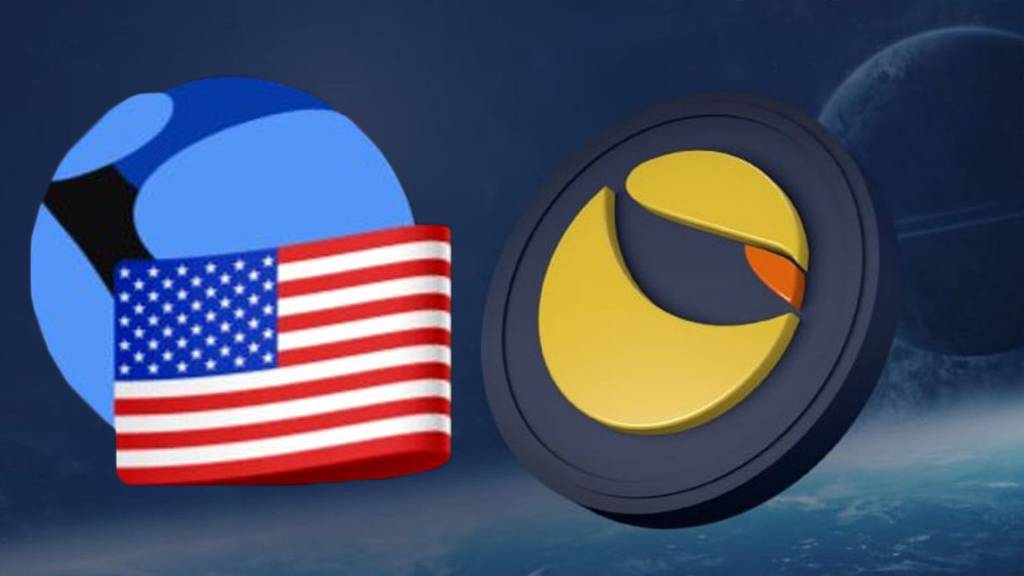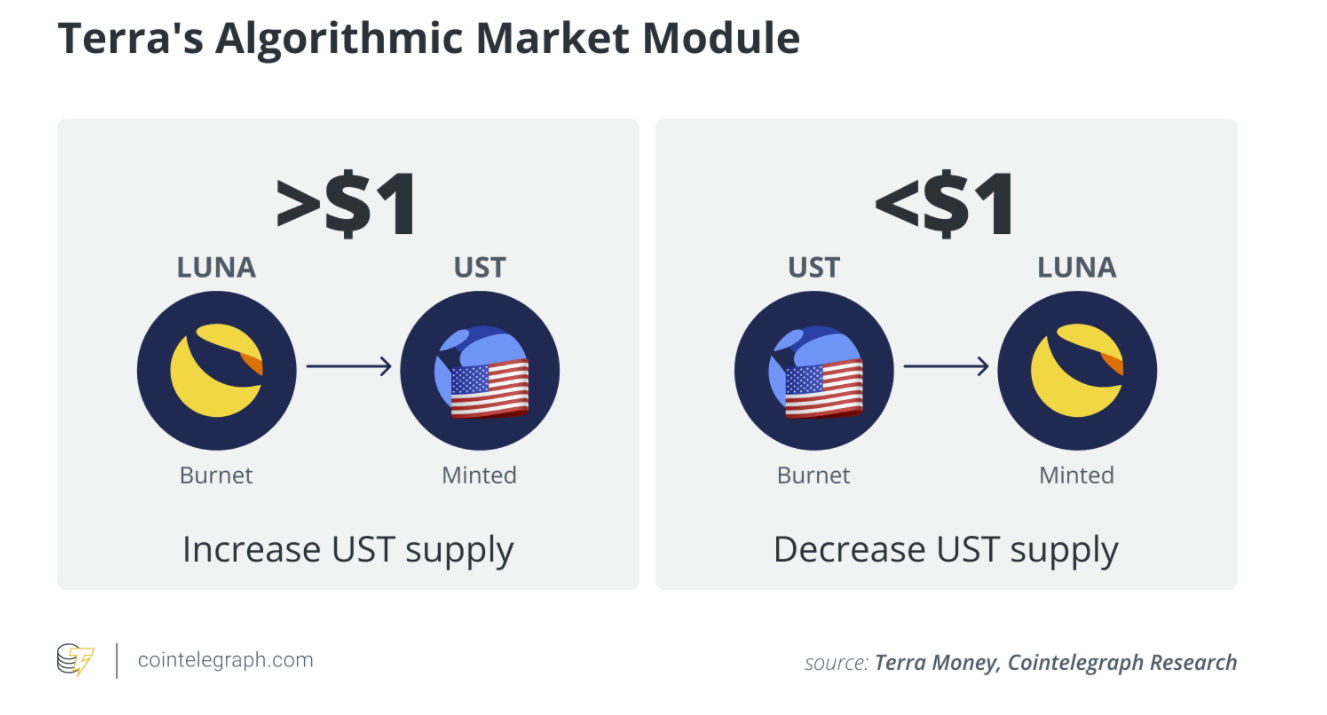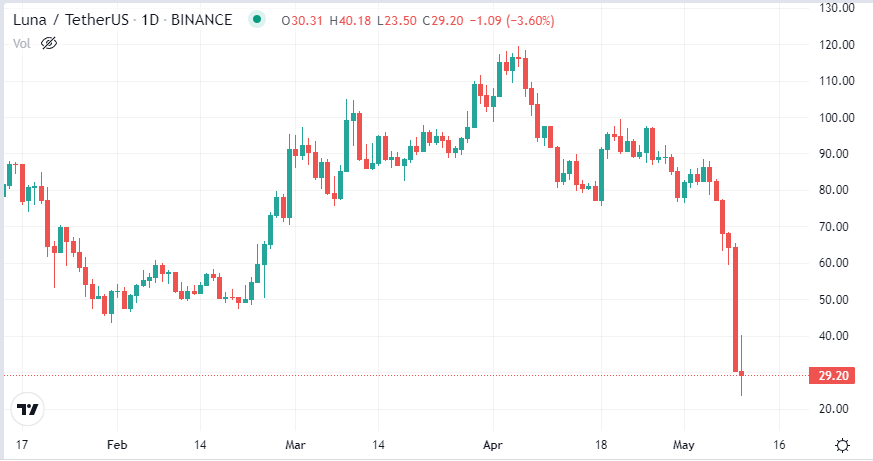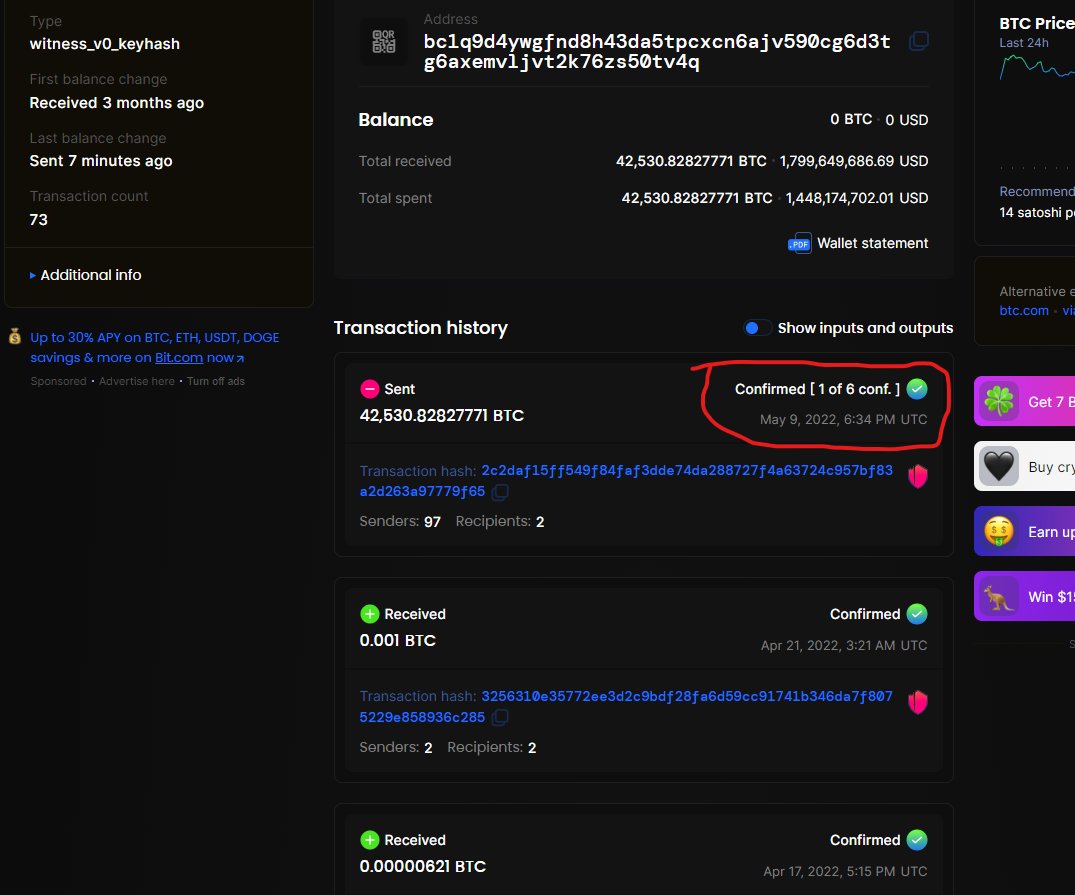According to CoinMarketCap data, currently LUNA, Terra’s native cryptocurrency has fallen to $31.5, down more than 63% from $83 a few days ago, May 6, 2022. At the same time. , the market capitalization of LUNA also slipped 22.84%, from 27.41 billion USD to 11.3 billion USD.
This deep downtrend is attributed to the torrent of bad news about TerraUSD (UST), Terra’s stablecoin. In this case is the rumor of a cryptocurrency “whale” that sold as much as 285 million UST on the open market in the past May 7, 8. The massive size of this transaction reduced the value of UST to $0.98, deviating from the standard 1:1 ratio commonly found in USD.

But why would the decline of a stablecoin like UST send LUNA into a free fall?
Unlike other stablecoins that often use USD reserves to ensure 1:1 pegging, UST is pegged to USD through reserve assets collateralized by its LUNA tokens. When the price of UST exceeds 1 USD, users are encouraged by the Terra protocol’s algorithm to burn LUNA tokens and mint UST. The protocol will reverse when the price of UST falls below 1 USD.
This strategy helps to maintain the stability of the UST and anchor its price to the USD.
According to the Messari blog, research analyst Will Comyns said “While the supply of UST decreases, the value of LUNA falls and while the supply expands, the price of LUNA increases. LUNA is the value counterweight to UST. By adjusting supply, LUNA’s valuation increases as UST demand increases.”

Also according to the Messari blog, a large number of USTs are concentrated in a few DeFi protocols such as Anchor, a decentralized lending platform that promises high returns for UST senders. When the aforementioned crypto whales destabilized the UST-USD rate, they triggered panic withdrawals of investors from the DeFi platform.
According to data from Anchor Protocol, their total UST deposits have dropped from 14.09 billion UST on May 6, 2022 (before the bad news came out) to 10.95 billion UST now – about the same amount. a decrease of 22.23% in deposits.
With the huge volume of UST dumped on the exchange, the supply of UST in the market also skyrocketed suddenly. This leads to a mismatch between supply and demand in the market, prompting the Terra protocol to incentivize miners to burn UST and mint LUNA, increasing the supply.

In the midst of the gloomy crypto market, the sudden increase in the supply of LUNA is the explanation for the sharp drop in the price of this cryptocurrency.
Implications for Bitcoin and other cryptocurrencies
But not only LUNA, the drop of UST also negatively impacted other cryptocurrencies. Prior to that, in order to insure the UST rate against market volatility, Do Kwon, founder of Terraform Labs and others created the Luna Foundation Guard (LFG) as a cryptocurrency reserve.
As of this past Friday, LFG’s total reserves had reached about $3.5 billion following the announcement of another $1.5 billion purchase for their stockpile. They also have about 200 million USD in AVAX in their reserves, in addition to other cryptocurrencies like LUNA and UST.

However, when the UST-USD rate dropped sharply due to the huge amount of UST being put on the market, LFG said that it is taking steps to protect the stability of this stablecoin. That includes lending traders $750 million in Bitcoin as well as borrowing another $750 million in UST to buy more Bitcoin when “market conditions stabilize.”
In other words, LFG sold an amount of Bitcoin about 750 million USD to attract UST to stabilize the exchange rate of this stablecoin. But it seems that this effort is still not enough when the UST rate continues to fall deeply, even falling to 0.7 USD last night.
This means that if it wants to attract more UST to stabilize the exchange rate – with a total market capitalization of about 17 billion USD – LFG must have billions of other dollars to buy into it. That seems to be forcing LFG to sell off its stockpile.

An e-wallet believed to be related to LFG transferred $1.4 billion in Bitcoin
According to a report from Whale Alert, a tracker of high-volume Bitcoin transactions, an LFG-related e-wallet moved out over 42,530 Bitcoins last night – the equivalent of nearly $1.4 billion in Bitcoin to market. . This can explain the sharp drop of more than 10% of Bitcoin last night.
After falling to a low of $0.7, the price of UST improved and at one point rose to $0.95 before falling to the current $0.91 level. Bitcoin also recovered slightly from $30,000 to $31,800.
However, it is difficult to say that the turbulence for UST and the crypto market is over as the risk of a UST sell-off remains. If the UST continues to decline and the LFG continues to sell off its reserves to support it, it is likely that the cryptocurrency market will continue to wobble in the near term.
Check out CNBC
